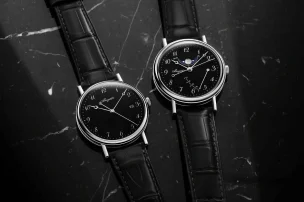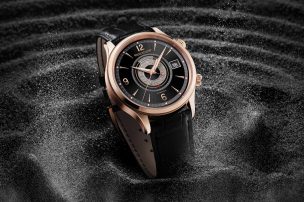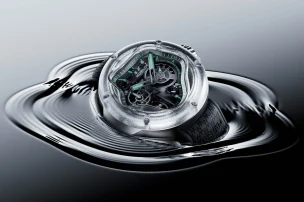

Panerai L’Astronomo Luminor 1950 Tourbillon Moon Phases Equation of Time GMT 50 mm
The Astronomo Luminor 1950 Tourbillon Moon Phases Equation of Time GMT (Ref. PAM00920) is the first of Officine Panerai’s creations to have moon phase indication and a new system using polarized crystals to indicate the date. The new made-to-order timepiece which can be personalized, expands the series dedicated to the genius of Galileo Galilei.

Panerai L’Astronomo Luminor 1950 Tourbillon Moon Phases Equation of Time GMT 50 mm Ref. PAM00920
Innovation and newest standards of watchmaking are combined in the new L’Astronomo Luminor 1950 Tourbillon Moon Phases Equation of Time GMT, the latest creation dedicated to Galileo Galilei. The Luminor 1950 case is part of the history of Officine Panerai.
The first Panerai L’Astronomo, presented in 2010 on the occasion of the 400th anniversary of the celestial observations made by Galileo as a result of the invention of the telescope, was the first timepiece created by Panerai with a tourbillon regulator, calendar, equation of time indication and the display of the times of sunrise and sunset. Like its predecessor, the new L’Astronomo Luminor 1950 Tourbillon Moon Phases Equation of Time GMT is made to order. The skeletonized movement, the P.2005/GLS – standing for Galileo Luna Scheletrato –, is personalized to operate in accordance with the geographical coordinates of a place chosen by the owner. It provides the same range of functions as the first L’Astronomo, and is additionally equipped with the GMT function, an indication of the phases of the moon and a system for displaying the date using polarized crystals.
The moon phase indicator
Thanks to the invention of the telescope, Galileo made revolutionary discoveries concerning the appearance and the movement of the moon. The drawings of what he saw are made with extreme accuracy and attention to detail which is still amazing today. So in a timepiece dedicated to him, the Italian watch brand chose a moon phase indication, a classic complication which Panerai has interpreted in its own way. On the back of the new L’Astronomo’s P.2005/GLS movement is a day/night indicator which also clearly displays the phases of the moon, by means of a system consisting of two superimposed discs which rotate in combination. The upper disc – which is read by a small external index fixed onto the movement – displays the 24 hours of the day, showing the sun during the hours of daylight and the stars of the sky at night. At the centre of the starry sky is a little round window through which the lower disc can be seen; on this the moon appears, its shape evolving day by day as a result of a small supplementary rotation of this disc of about 6.1° per day, a figure based on the exact duration of one lunar cycle, an average of 29 days, 12 hours, 44 minutes and 3 seconds.
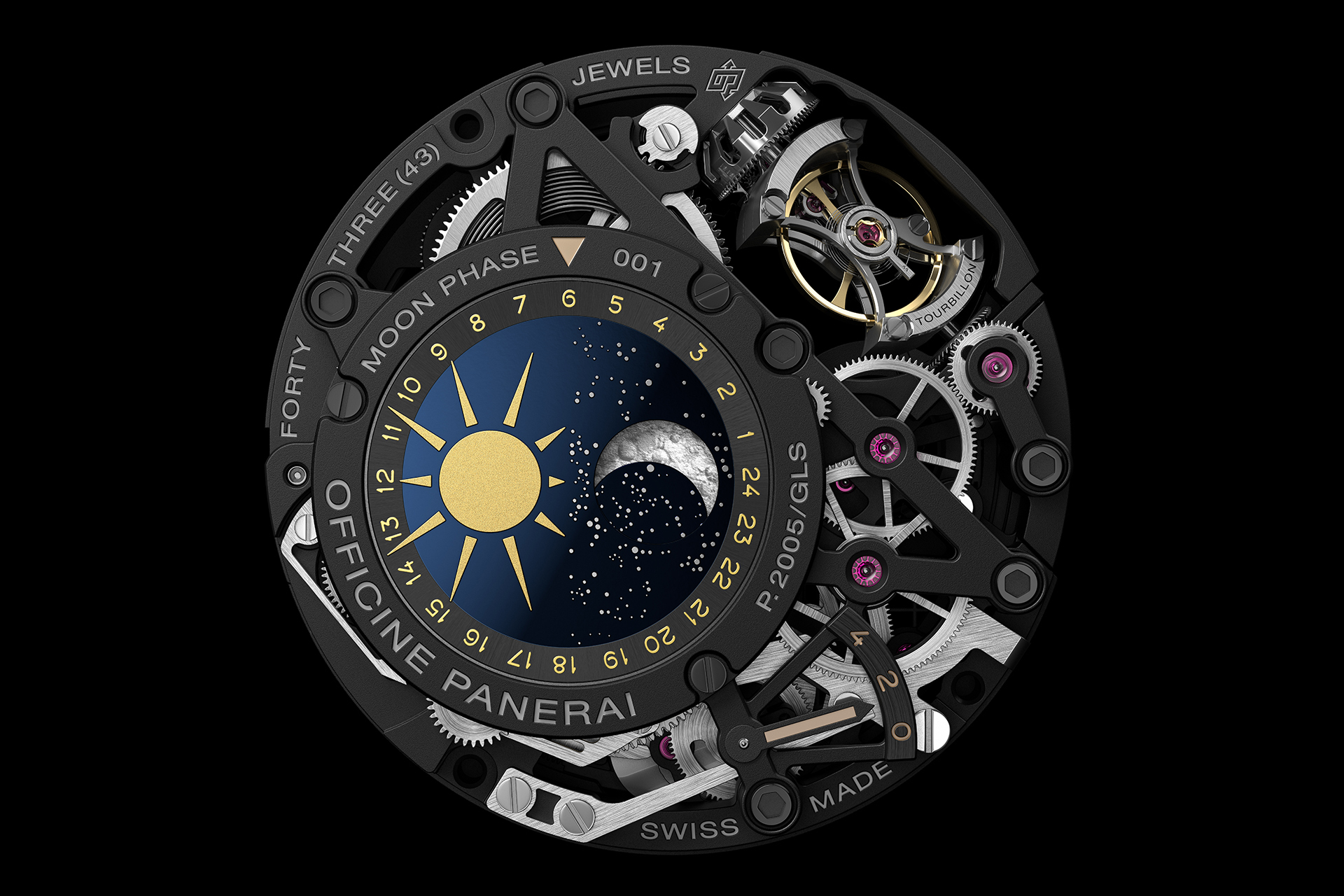
Panerai L’Astronomo Luminor 1950 Tourbillon Moon Phases Equation of Time GMT 50 mm Ref. PAM00920
Given that each watch movement is made according to the coordinates of a place chosen by the watch’s owner, the indication of the moon phases always relates to the sky above that place, and also takes account of the difference between the earth’s northern and southern hemispheres. Like the moon phase indicator, the indicators of sunrise and sunset times are connected to home time and therefore, if the owner of the watch should find himself in a city with a different time zone from that of the chosen city, these indicators will continue to show the situation at the time at home, which is indicated by the GMT hand.
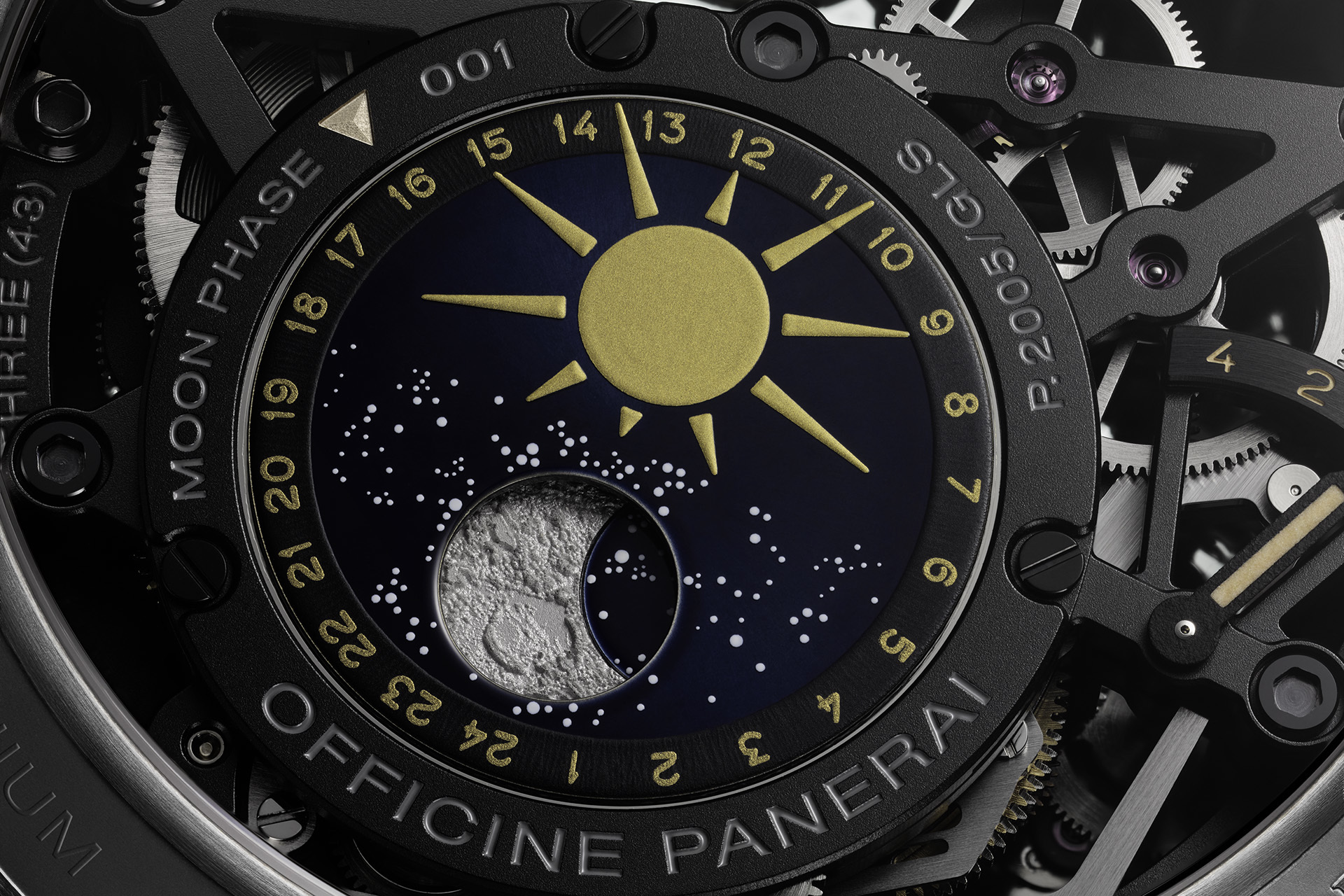
Panerai L’Astronomo Luminor 1950 Tourbillon Moon Phases Equation of Time GMT 50 mm Ref. PAM00920
At six o’clock the linear indicator of the equation of time, which displays the difference between actual time (solar time) and conventional time on each day, is located. This period ranges between plus 15 minutes and minus 15 minutes, according to the time of year.
A polarized crystal date display
As well as the moon phase indicator, the hand-wound P.2005/GLS calibre also has the characteristic Panerai tourbillon escapement, which can be seen from the front and the back of the watch due to the work of skeletonizing the movement and the absence of an actual dial. All the elements which would be found on a traditional dial appear on the movement or the flange, and the three spring barrels, which store enough power to last at least four days, are visible through the open back, which also enables the power reserve indicator mounted on the movement to be read.

Panerai L’Astronomo Luminor 1950 Tourbillon Moon Phases Equation of Time GMT 50 mm Ref. PAM00920
In a watch with this construction, a date disc designed in the traditional way would to some extent conceal the skeletonized movement, because it would cover part of the components. The Laboratorio di Idee at the manufacture in Neuchâtel has therefore designed a system – pending patent by Panerai – in which the date disc is made of borosilicate glass and the numbers of the days have laser-modified optical properties. The numbers are virtually invisible in all positions except for the one that is aligned with the little date window, where a further polarized crystal, situated above the date disc, causes the number to appear so that it is easily legible.
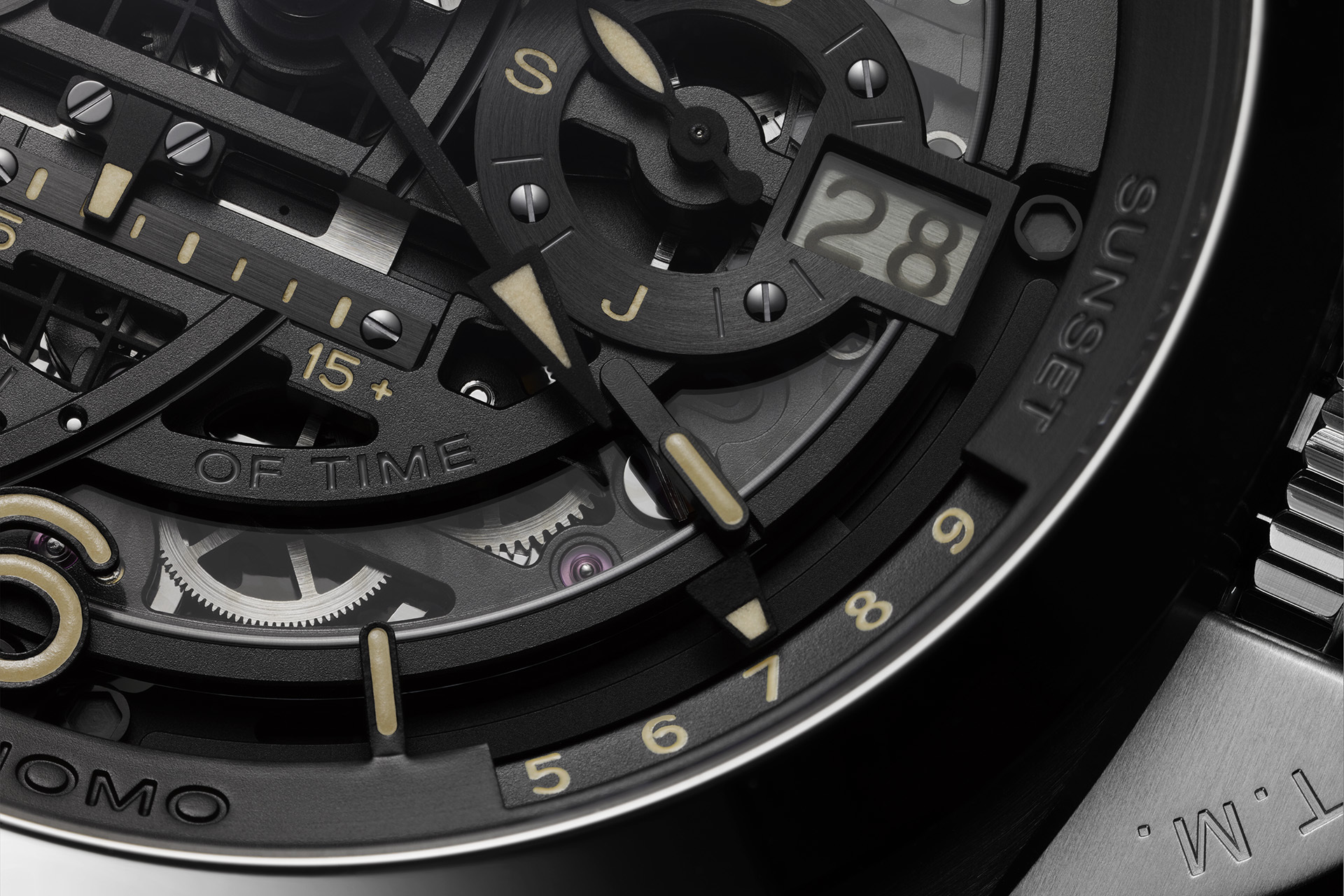
Panerai L’Astronomo Luminor 1950 Tourbillon Moon Phases Equation of Time GMT 50 mm Ref. PAM00920
The tourbillon regulator patented by Panerai
In the system patented by Panerai, the tourbillon’s rotation is different from that of the classic tourbillon. The cage of the balance rotates continuously on itself, to correct any alterations caused by gravity and possible friction. In this mechanism the cage rotates on an axis at a right angle to the balance, not parallel with it. Also, while the traditional tourbillon rotates once in one minute, that of the P.2005/GLS rotates once in 30 seconds. Its rotation can be seen by an indicator in the small seconds counter at 9 o’clock. The higher speed and the particular arrangement of the mechanism mean that any possible alterations of rate are effectively compensated, resulting in more accurate timekeeping.
An exclusive creation, made to order and personalisable
As well as the technical personalization of the P.2005/GLS movement, the new L’Astronomo Luminor 1950 Tourbillon Moon Phases Equation of Time GMT also provides the opportunity of selecting the material and finish of the case, the colour of the hands and that of the Super-Luminova which makes the watch’s indications readable even in the dark, as well as the colour of the alligator strap. In this way each client can create his individual watch. For example there is the choice between a red gold or a white gold case, or the brushed titanium case of the basic version of the L’Astronomo for a more sporty and functional appearance. Other than that the watch is water-resistant to 10 bar, a depth of about 100 meters.
FEATURES
| BRAND: | Panerai |
| MODEL: | L’Astronomo Luminor 1950 Tourbillon Moon Phases Equation of Time GMT |
| REFERENCE: | Ref. PAM00920 |
| PRICE: | On demand |
| CASE MATERIAL: | Choosable: Brushes titanium, red or white gold |
| DIAMETER: | 50 mm |
| DIAL: | No traditional dial, display elements directly attached to the movement or the flange |
| STRAP: | Alligator leather, colour is choosable |
| CALIBRE: | Calibre P.2005/GLS |
| MECHANISM: | Hand-winding |
| POWER RESERVE: | 96 hours |
| FUNCTIONS: | Hours, Minutes, Small Seconds, Date, Month Indicator, GMT, Power Reserve Indicator on the back, Equation of Time, Sunrise/Sunset Times, Moon phases indicator on the back, Tourbillon Water resistance: 10 bar (~ 100 meter) |








